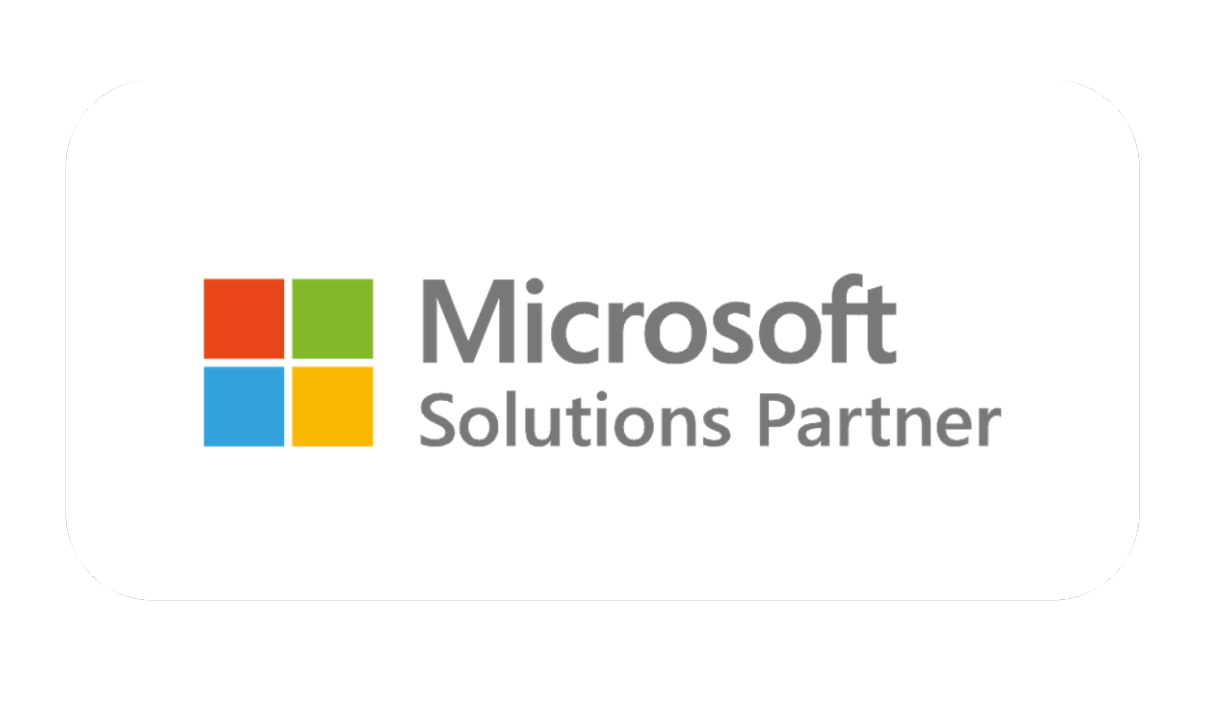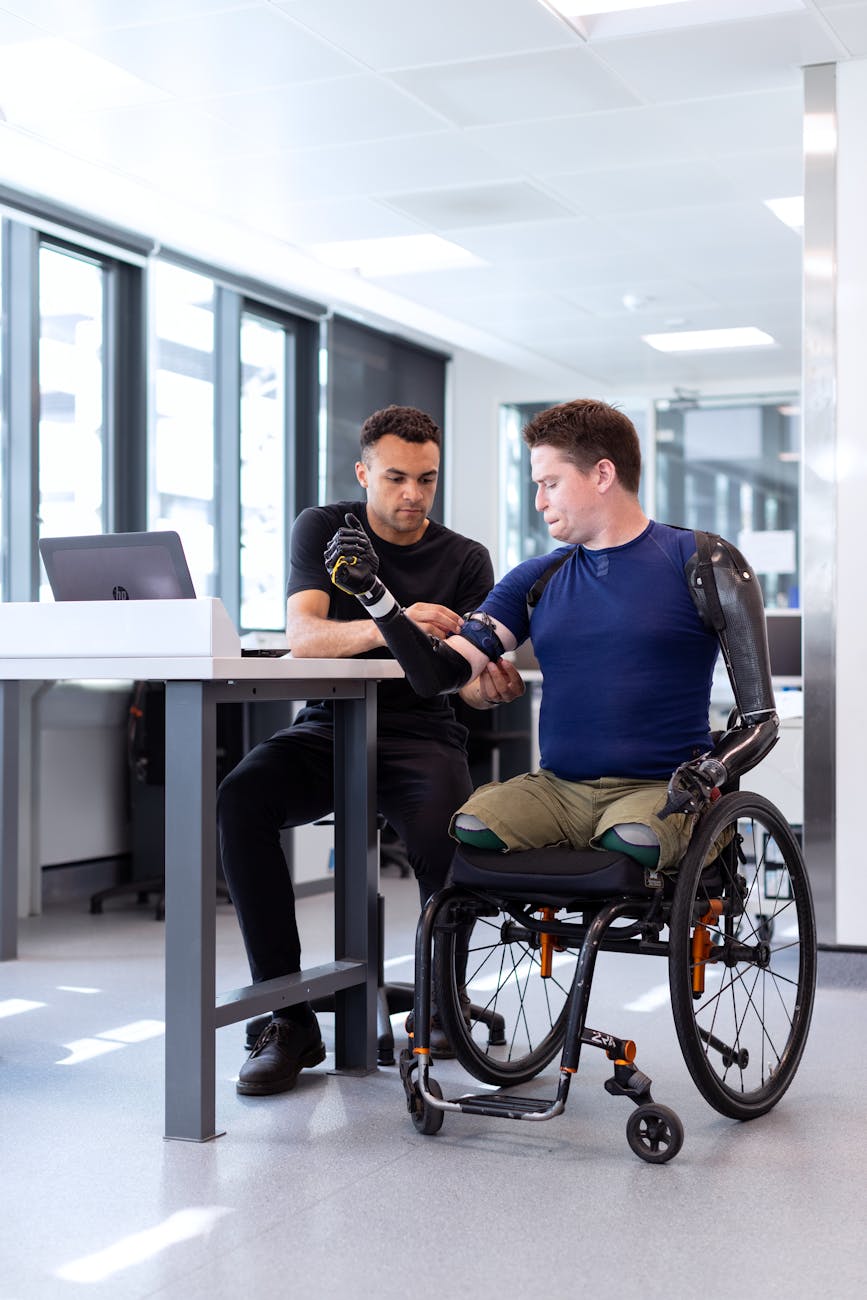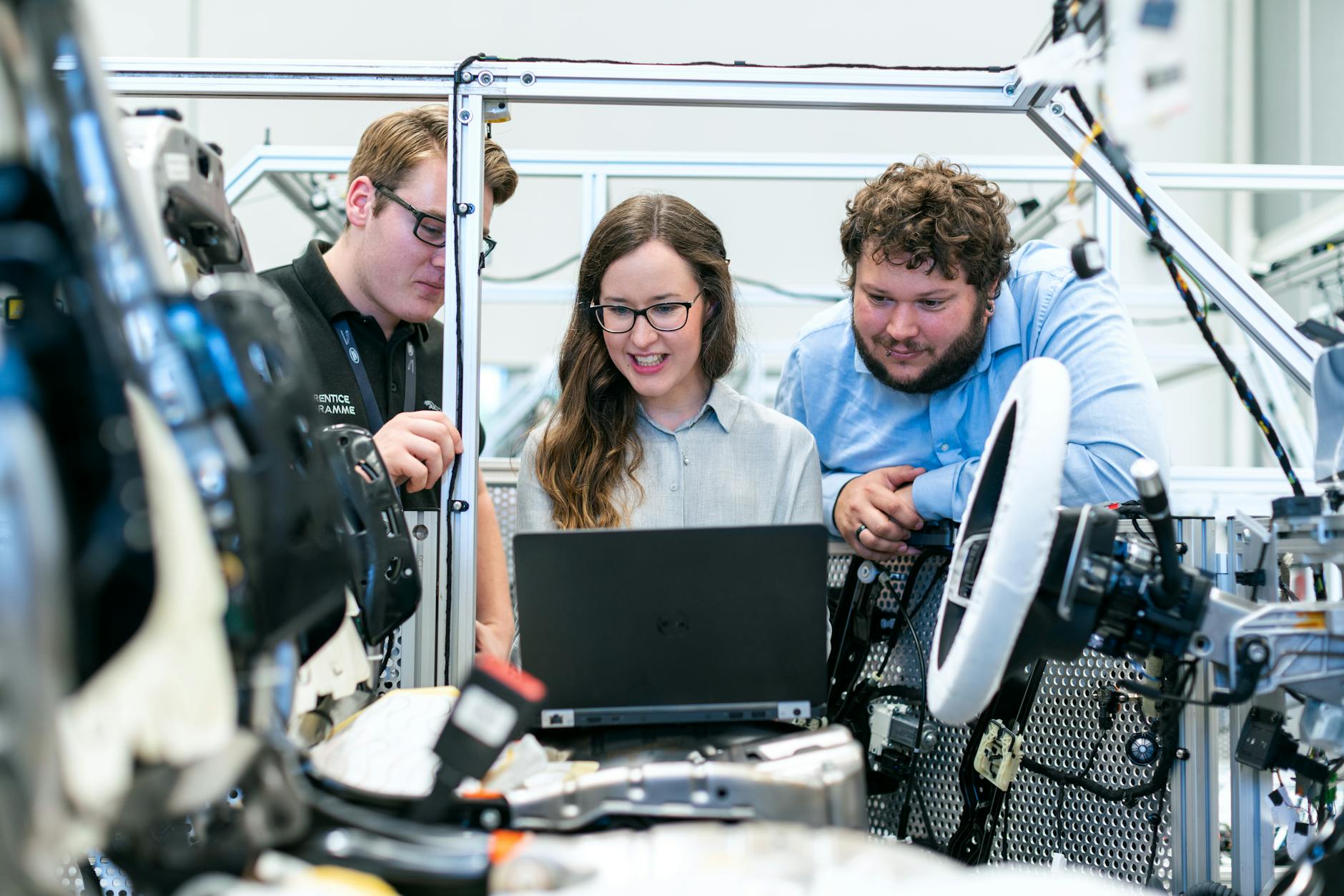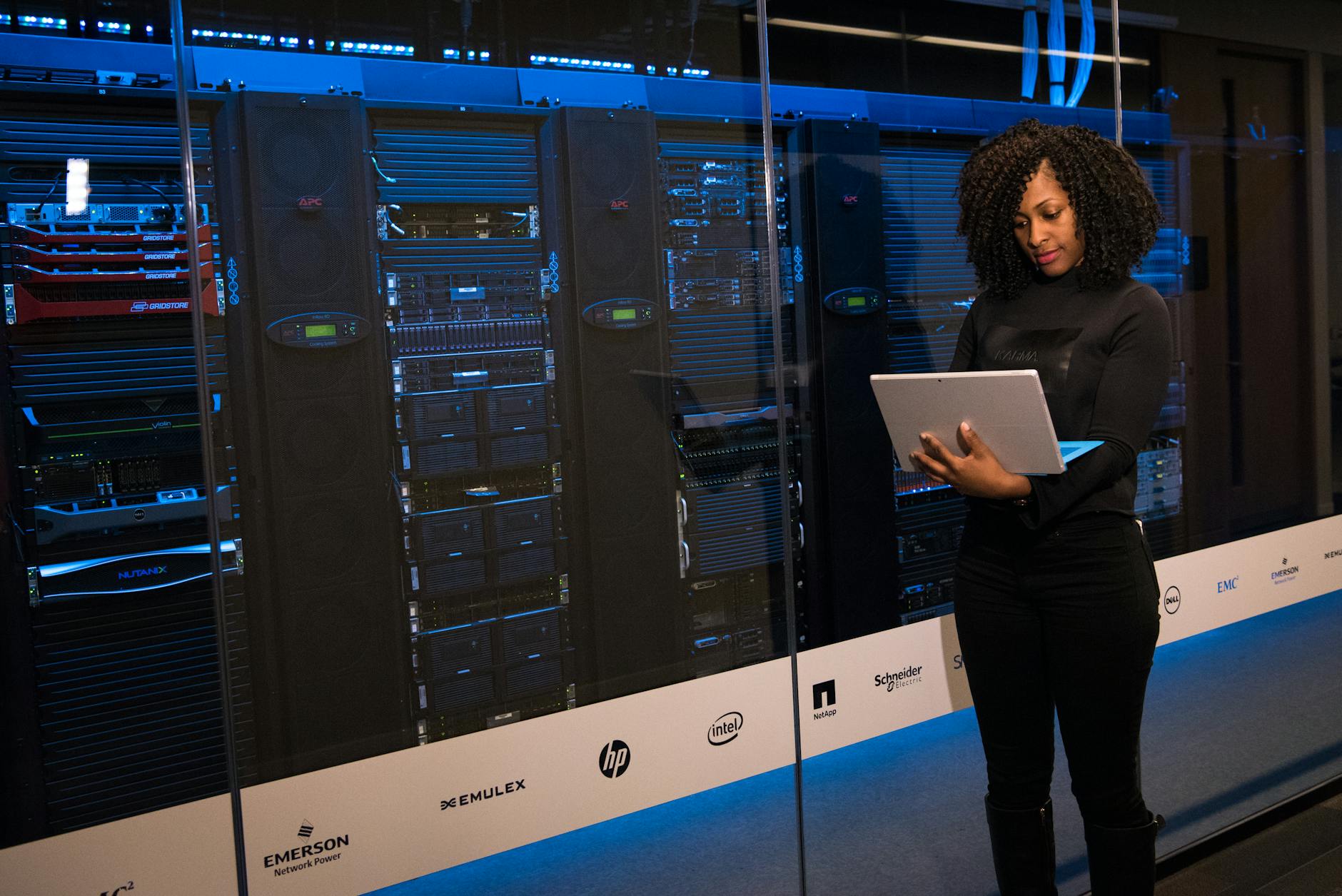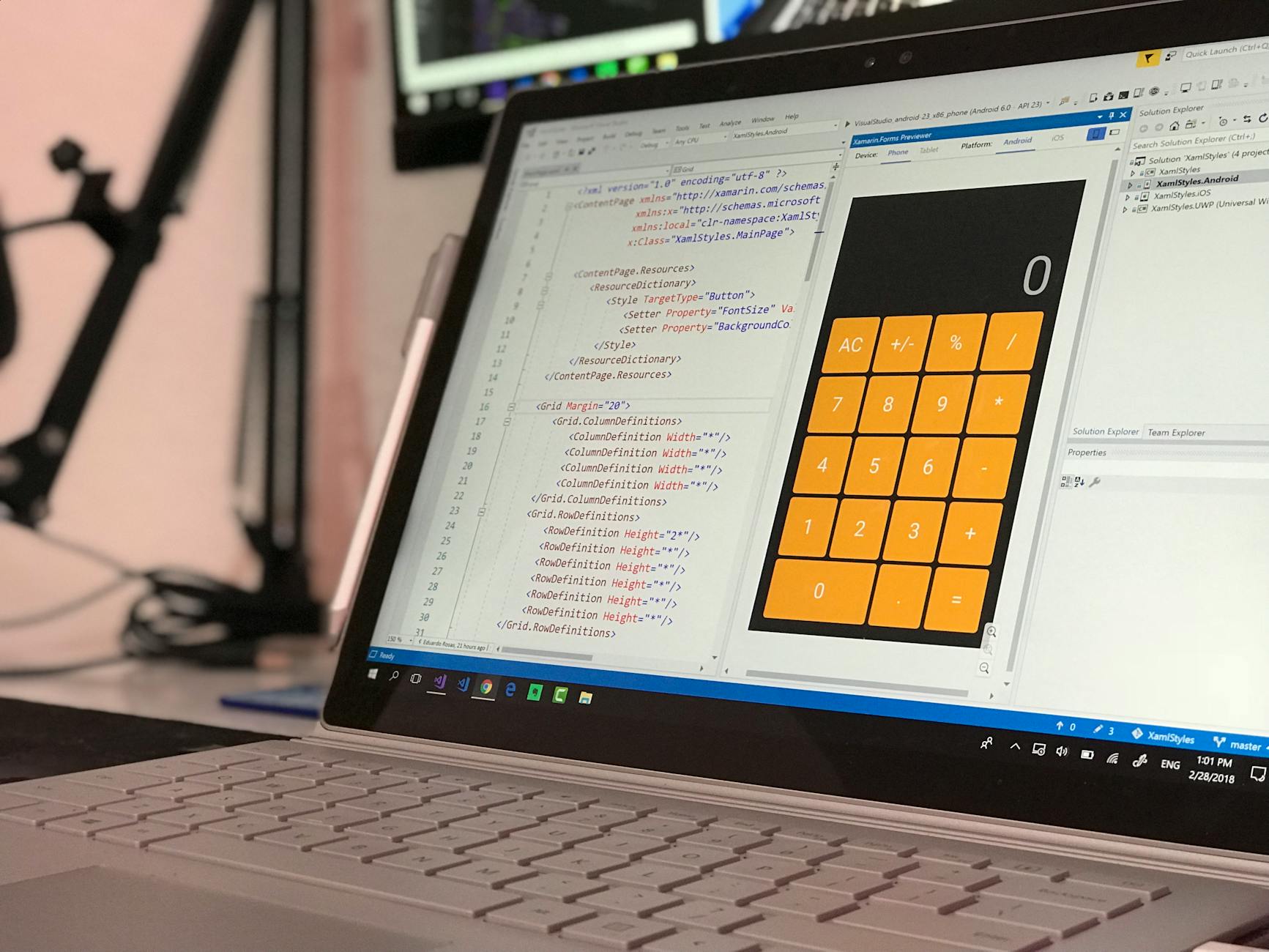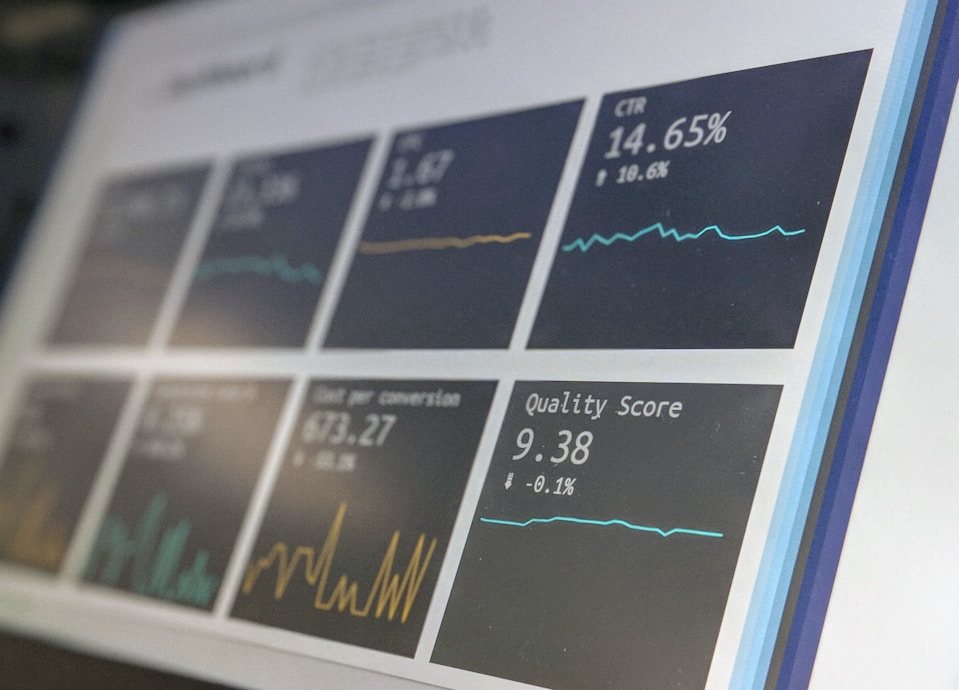In the past few years, we’ve seen a substantial increase in the adoption of wearable devices. Their popularity doesn’t seem to cool down as people of all generations go digital and shift focus toward a health and wellness lifestyle. Thus, making wearable technology a treasure trove for both healthcare consumers and providers.
Statista predicts the global market for wearable healthcare devices will reach $76 billion by 2029. This statistic speaks for itself, the market will continue booming. Such growth will probably open up more opportunities for organizations that feel comfortable acquiring wearable tech solutions.
Key Highlights
- Powered by fall-detection features, smartwatches can promptly identify sudden falls and send alerts to emergency contacts or services, sharing the wearer’s location.
- Innovative textiles allow monitoring of critical health indicators like body temperature and heart rate, and can even adjust temperature aligned with wearer comfort.
- Wearables help monitor overall well-being and reduce disease risk, thus significantly cutting costs from clinic visits and expensive treatments.
- Companies that collect well-being information should strictly adhere to regulations and privacy policies not to compromise patient data.
Today, we’ll cover the most striking examples of using wearable technology in the healthcare industry and explore its impact on the medical environment in general. So let’s dive into the subject and see why many companies consider leveraging healthcare app development to embrace the potential of these innovative gadgets.
What Is Wearable Technology in Healthcare?
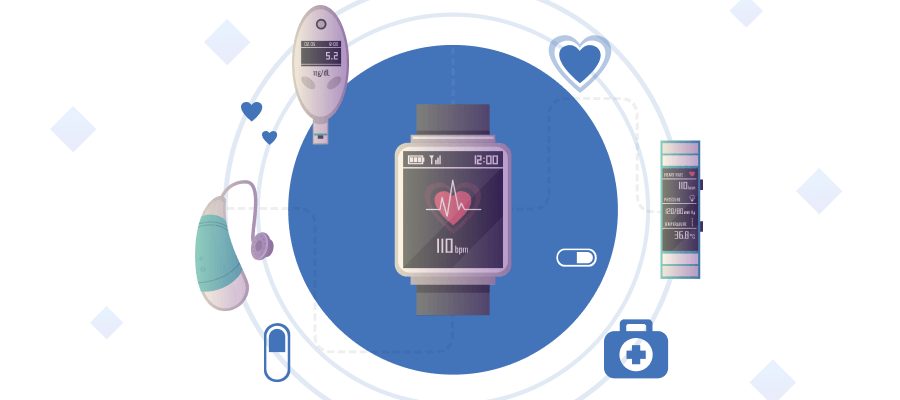
Basically, the term “wearables” refers to the Internet of Things solutions that combine hardware, software, and app development. In healthcare, it’s a network of electronic devices, usually worn by a patient, and user interfaces, frequently mobile applications, connected to the cloud that collect, transmit, and analyze personal health data.
These gadgets have embedded smart sensors that allow for measuring and monitoring vital physical parameters like heart rate, blood pressure, or body temperature. Of course, this information and more can also be gathered by other medical IoT devices like hearables or ingestibles. However, it’s the wearable health technology that remains the most popular so far.
Contrary to the first thought that comes to mind, wearables encompass way more than just fitness trackers. They are usually small enough to be attached to a wrist or penny-sized patch but innovative enough to help manage chronic conditions and prevent serious illness.
Explore the Use of the Internet of Things in Healthcare
So let’s move to the next part and discover what kind of devices and sensors are employed for human health monitoring and how they help better serve the needs of patients.
Types of Medical Wearable Devices
While the technology is continuously evolving and new devices emerge on the market, we’ll take a closer look at those that are available off the shelf today. These include both consumer gadgets acquired by the public at large and medical-grade solutions used by healthcare professionals.
Wearable Fitness Trackers
Of course, we can’t fail to mention good old fitness trackers. They are one of the simplest wearable devices that allow users to keep an eye on their health by monitoring such basic parameters as heart or pulse rate. Moreover, the wristbands help control physical activity and track the number of steps, sleep stages, and calories burnt.
Read about the Fitness Studio Automation to Track Running Activity
These compact devices are equipped with sensors and connected to smartphones. Thanks to mobile app developers who have designed a great number of user-friendly solutions, people can easily view and manage collected data on their mobile phones. Most likely, you’re one of those who benefit from such apps daily.
Need mobile app development services?
CONTACT US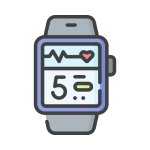
Smart Health Watches
Smartwatches entered the market of electronic devices quite a long time ago. However, they started to provide real value related to health only recently. In addition to capabilities to manage calls and messages or send voice commands, smartwatches can equip users with insights into physical activity levels, stress, or even heart pattern anomalies.
The last is achieved due to new advances in optical sensors, semiconductors, artificial intelligence, and data science technologies. All of them provided the ground for photoplethysmography, or PPG, a measurement method that serves to monitor volumetric variations of blood circulation. For example, it can be used for remote patient monitoring to detect heart disease.
Moreover, many watches today include a fall-detection feature, which is especially helpful for elders. Here again, AI algorithms play a hefty role in making it possible. They promptly determine falls and can immediately send an alert to the emergency contact, sharing the location of the person. Some smartwatches can even go further by directly contacting emergency services.
Wearables can spot falls, sudden cardiac events, and other similar health issues largely thanks to motion sensors like accelerometers and gyroscopes. Specifically, they monitor the user’s movements. Any unusual patterns signal that something has happened. The device then takes action, such as sending a message to an ICE contact or directly calling emergency services.
Discover How to Develop an RPM Solution to Monitor Urinary Conditions
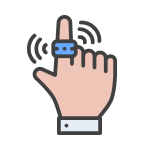
Smart Jewelry
If watches can be smart, why can’t jewelry? Today, it can and is already considered a type of wearable health device. Patients can rely on rings, earrings, or bracelets to monitor indicators like heart rate, blood oxygen, sleep quality, physical activity, and stress levels in real time.
This not only enhances remote patient monitoring but is also comfortable to wear. And really, who wouldn’t enjoy wearing beautiful jewelry that also helps track their well-being?
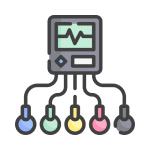
Wearable ECG Monitors
The market for wearable ECG monitors is estimated to cost $11.31 billion by 2029. Obviously, the future of these gadgets seems very promising. At its core, this medical device, empowered by wearable technology, supports cardiovascular patient care and is applied to diagnose common arrhythmias such as atrial fibrillation (AF).
Given the sophisticated machine learning algorithms, modern ECG monitors not only efficiently measure electrocardiograms but also detect if any abnormalities occur. The data can then be shared with a physician for further analysis and diagnosis of symptomatic or asymptomatic AF.

Wearable Blood Pressure Monitors
Hypertension is notorious for its aptitude to cause morbidity and mortality globally. Incorporating blood pressure (BP) monitors into wearable devices provides more opportunities to improve screening for hypertension on a daily basis. That way, enhancing health care delivery and promoting wellness.
Given recent innovations in wearable technology, consumers can measure blood pressure in a cuffless way. Even if this method is still in its infancy and requires further research, monitoring BP without a cuff elevates the patient experience and equips healthcare providers with additional tools to treat heart conditions.
Read about Tech Solutions that Help Increase Patient Experience
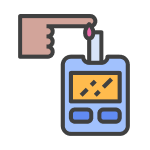
Glucose Monitoring Device
This gadget has become a real helping hand for people with diabetes. One of the main benefits of glucose monitoring devices is their ability to measure blood glucose levels in real time and notify users in case of any significant risk. Thus, helping people to establish more balanced food consumption.
As a result, patients can make more informed decisions about what to eat, when to take necessary medication, and other steps to improve their overall well-being.
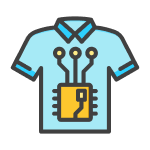
Smart Textile
In our innovative world, even clothing has become smarter. Indeed, decades ago, hardly we could picture that it would ever be possible to monitor well-being through clothes. However, today, it’s more than just a reality.
This change has been made possible through smart textiles. In essence, this advanced innovation involves embedding technology into fabrics, allowing clothing to monitor critical health indicators like body temperature, heart rate, glucose levels, and the like.
Moreover, intelligent textiles go beyond merely providing insights into well-being. They can also make necessary adjustments, such as regulating temperature based on the wearer’s needs. Obviously, this wearable is a paradigm shift in healthcare, with a promising future ahead.
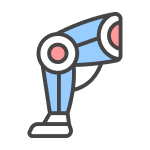
Robotic Prostheses
Another groundbreaking innovation in healthcare is AI-powered robotic prostheses. With this technology, users may feel more confident wearing prostheses and living a fuller life. This is mostly because these devices are highly adaptive and can learn from the user’s unique movements, ensuring more natural motion.
Furthermore, many robotic prostheses can be integrated with various devices, making it possible for users to seamlessly interact with their smart devices and fully benefit from their capabilities.
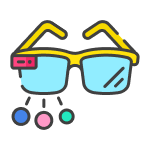
Smart Glasses
Unlike the previous wearables in our list, these ones aren’t designed primarily for patients. Instead, they’ve become incredibly useful for doctors. Specifically, smart glasses elevate patient care by keeping information in the healthcare provider’s line of sight.
Just picture how useful it can be for a doctor to have a real-time insight into a patient’s health condition and previous analysis in the surgery rooms. As such, there is no need to shift focus away from the patient to check insights. Everything is right in view.
This is just one example of how smart glasses are used in healthcare. This technology is continuously evolving and undoubtedly has a promising future.
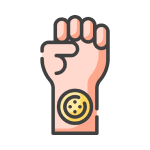
Biosensors
Our list of wearable in medical healthcare would be incomplete without biosensors. Usually, they come in the form of self-adhesive patches that leverage sensor development and AI-based analytics to collect vital health data without restricting any movement.
Discover more groundbreaking use cases of AI in Healthcare
Biosensors provide both patients and clinicians with a convenient way to measure variables like cardiac output, respiratory rate, weight, or even fluid volume. Thus, increasing the chances of preventing heart failure. Adoption of this non-invasive and continuous monitoring method paves the way for improved patient outcomes and better quality of care.
Overall, biosensors may look similar to the other wearables we’ve discussed earlier. The key differences are that patches must be replaced periodically, while smartwatches or fitness trackers typically have long lifetimes.
Additionally, patches may not be suitable for people with skin sensitivities or adhesive allergies. However, these wearables are excellent for short-term medical monitoring.
Pros and Cons of Wearable Technology
As you can see, different wearable devices have already earned widespread acceptance by consumers and medical professionals. So what are the reasons behind this growing demand? Let’s look at the benefits of wearable technology as well as go through the disadvantages it reveals in healthcare.
Benefits of Wearable Technology in Healthcare
It’s no surprise that many companies leverage the development of medical wearables, as the technology provides ample opportunities and benefits for the healthcare sector. In general, the utilization of these compact devices allows the industry players to achieve the following goals:
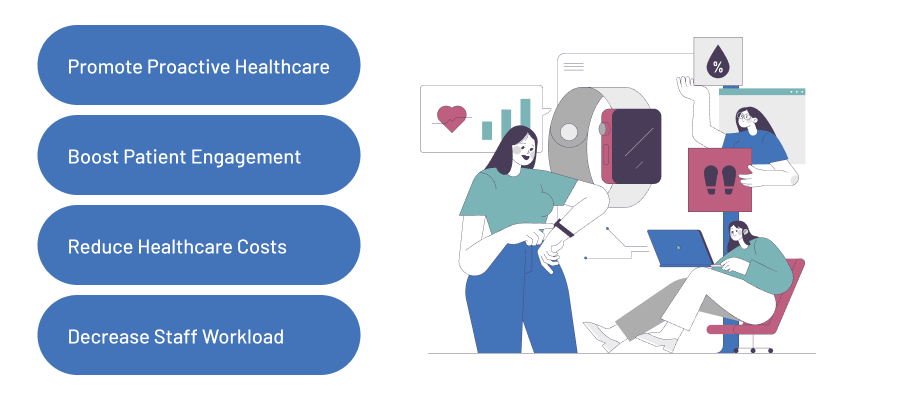
1. Promote Proactive Healthcare
With wearable tech, it’s easy to monitor health regularly and notice any deviations in vital signs when they appear. Consumers can take proactive actions to prevent serious health issues at early stages. At the same time, clinicians can help their patients quickly respond to the alerts and apply treatment promptly. This can also significantly elevate chronic disease management.
The principle is the same: wearables monitor critical insights into patients’ health conditions and spot possible anomalies, allowing for proactive intervention. This not only improves patient well-being, but also minimizes risks of readmission. In this way, wearables enhance care delivery and drive patient-centricity.
Yes, wearables are capable of detecting some early signs of disease. In general, this became possible thanks to continuous monitoring of health-related factors like heart rhythm, blood pressure, and temperature. As such, wearables may detect anomalies and notify both the patient and healthcare providers, allowing them to take proactive steps to prevent future complications.
2. Boost Patient Engagement
Today, people have unprecedented opportunities to take an active role in managing their overall well-being and receive personalized treatment plans. And it has largely become possible thanks to wearables.
They provide users with access to a pile of valuable data that helps them stay informed about their health conditions and gain a feeling of control. Additionally, the data collected by these devices allows healthcare providers to customize treatment plans aligned with individual patients’ needs.
Dive into our publication to see How to Keep Your Patients Loyal
Overall, this technology facilitates a collaborative doctor-patient environment and involves patients in maintaining their health continually.
Find out about the Importance of Patient Engagement
3. Reduce Healthcare Costs
Since wearables help promote health, minimize risks for disease, and improve early diagnosis, patients spend less on visiting doctors. On the other hand, healthcare providers can monitor patients once they leave the hospital to avoid readmission charges and loss of reimbursements from insurers. That way, the technology results in medical cost reduction.
4. Decrease Staff Workload
Wearable devices generate a lot of personal health data that can be shared with doctors and analyzed to monitor patients remotely. This approach can help facilitate communications, reduce personal visits, and optimize the workload of healthcare professionals.
Challenges of Implementing Medical Wearables
Alongside the benefits come the challenges of wearable devices in healthcare that providers see today. As this technology is relatively new, it has some room for improvement. There are four major concerns to outline here:

1. Technical Issues
Portable health gadgets conventionally require much power provided by long-lasting batteries. To accommodate consumer preferences, these batteries should support wireless charging, let alone fit into small-sized devices. Thus, companies should consider investing in better semiconductor technology.
2. Interoperability and Integration
Transferring data between smart devices and systems that healthcare providers use is not as simple as we wish it to be. However, it’s crucial to achieve seamless data exchange, as without it, all the pros of wearable technology can go unnoticed. If wearables fail to integrate nicely with other devices or healthcare systems, the valuable information they collect may become unusable for providers.
3. Data Accuracy
Data is only useful when it’s accurate, and this is especially true for health information. That’s why it should be generated, transferred, and processed in the most efficient manner. Here, the application of AI, big data, and IoT technologies can come to help.
4. Security and Privacy
The owners of wearables are concerned about the security and privacy of the health data they share. As it still remains a hurdle, companies should incorporate security standards and adhere to privacy policies to protect data during its transfer and storage. Ensure that your solution follows HIPAA rules.
Read more about How to Reduce Security Issues for Connected Devices
One of the main ethical concerns of continuous health monitoring is that wearables may collect private data without people’s knowledge. For example, someone might think the device collects insights only about blood pressure and skin temperature, while it may also gather location and physical activity data.
Ideally, both tech companies and healthcare institutions, which often consider owning patients’ private data, should be transparent about what information they collect, how they store it, and with whom they share it.
It’s equally important to keep users’ data secure. Ideally, anyone collecting well-being variables should follow industry regulations like HIPAA, CCPA, and SOC2.
5. Improper Device Wearing
The accuracy of measurements and data relies heavily on the proper location of wearable sensors. They should be placed in direct contact with the skin and the right spot. However, it’s not always the case with devices secured with straps. On top of that, moisture or even tattoos can cause imprecise results.
6. High Costs
You might take all the necessary steps to keep your wearables secure, ensure smooth integration, and make them perform seamlessly. However, achieving this could cost a fortune, potentially making your gadgets too expensive for buyers. It’s like a double-edged sword.
Not to end there, opt for cost-effective materials and implement efficient production methods. This way, you may bridge the gap between quality and affordability.
7. Over-Reliance on Technology
Wearables help with health monitoring and improvement in many ways, and today, patients can easily assess their health through them. However, this can lead to over-dependence and over-reliance on technology, which, frankly speaking, isn’t a good alternative.
For example, a patient with hypertension who should go for regular checkups may rely only on wearable insights and skip preventive visits. But regardless of what their wearable shows, patients should never skip routine medical examinations or consultations with their doctors. Only this way can they identify critical issues early and avoid serious health diseases in the future.
The Future of Wearable Technology in the Healthcare Industry
Even with all the challenges present today, the number of consumer and medical-grade wearables will keep growing in the next few years. That niche is still very lucrative and offers vast opportunities to facilitate the healthcare environment.
The apps will get smarter and devices more reliable, allowing patients and clinicians to monitor a wider range of health conditions. It becomes evident that more companies will be encouraged to start the development of connected devices and software solutions to support them.
As far as we can tell, the advancement of artificial intelligence in healthcare will increasingly impact the efficiency of wearable products. It can enhance the accuracy of measurements and mitigate cybersecurity risks. Additionally, pairing IoT technologies and predictive analytics tools will help provide more insights into patient data.
If you want to keep up with the market demand and leverage the benefits medical wearables offer, don’t postpone initiating your project. Velvetech is a trusted development company with years of experience in delivering wearable technology and healthcare solutions for various needs. Contact us for a consultation to start implementing your idea.




